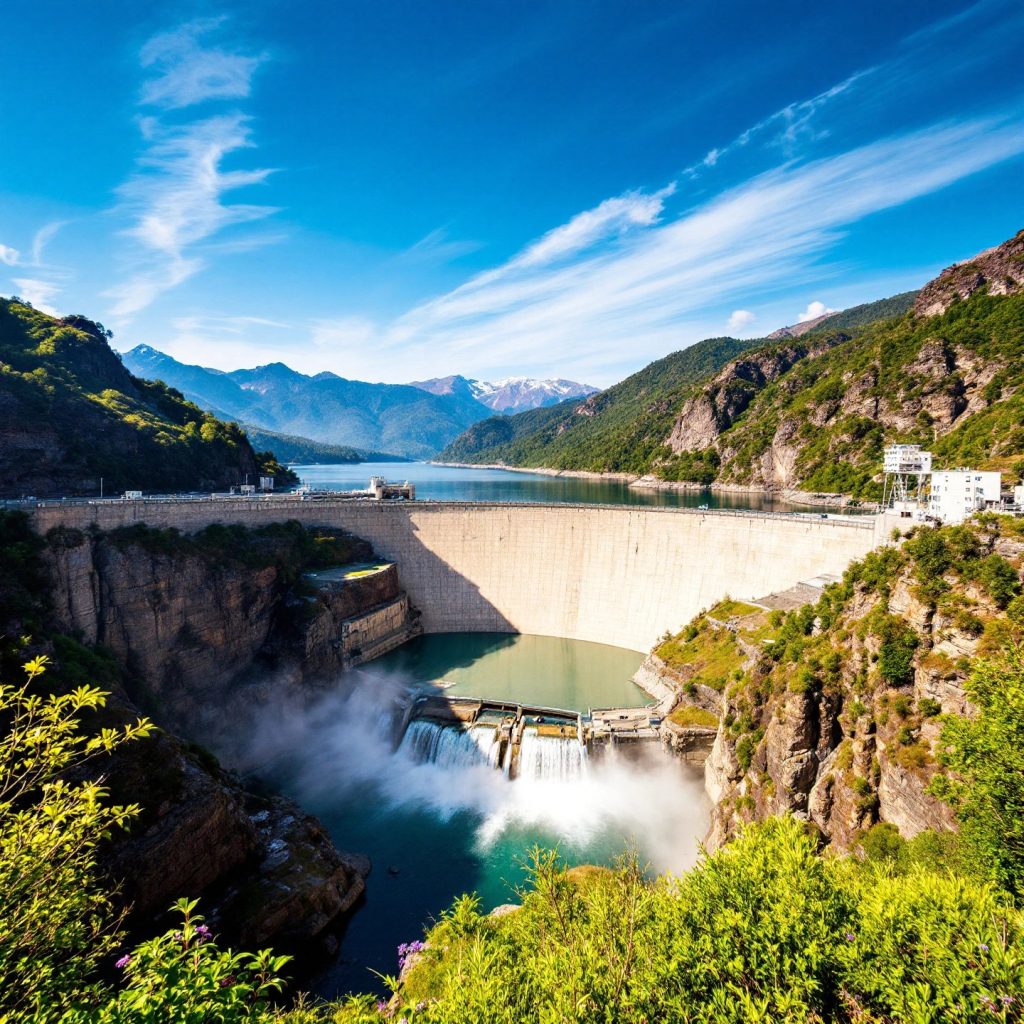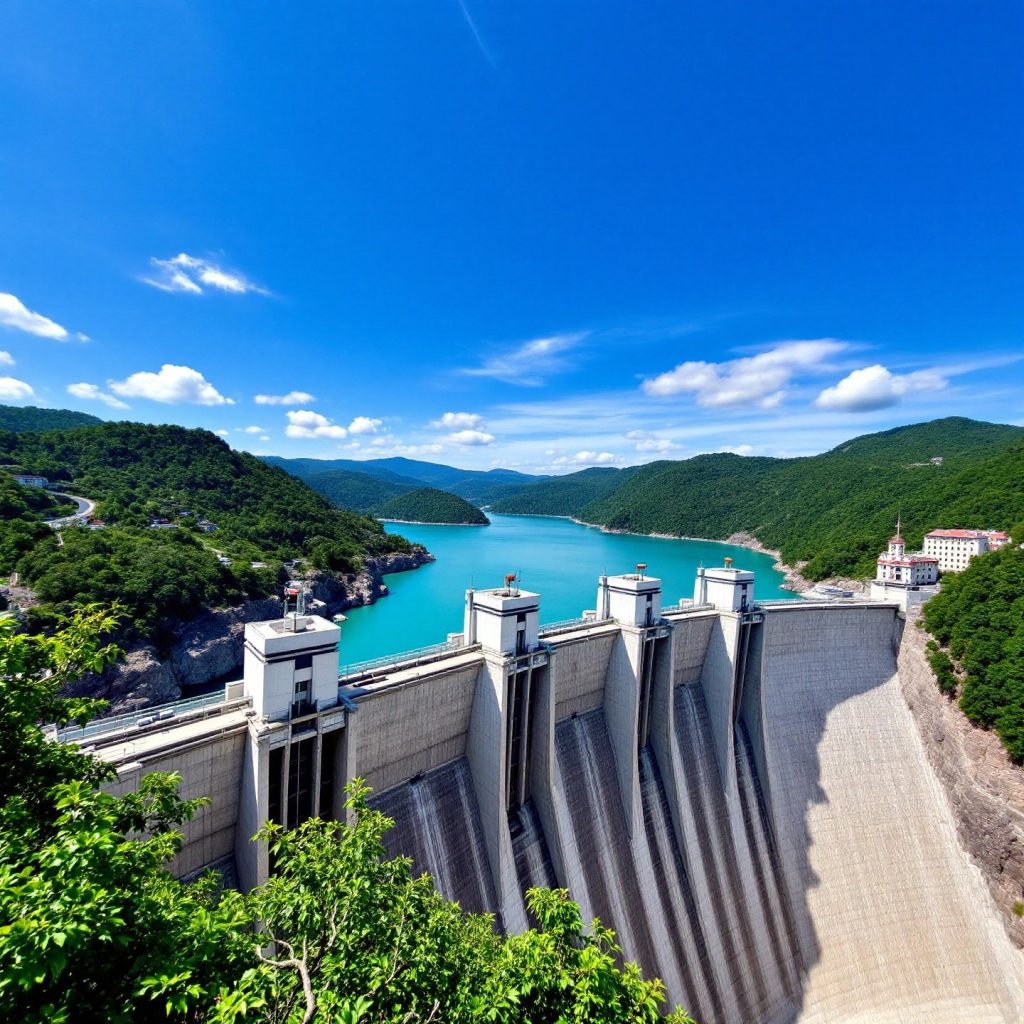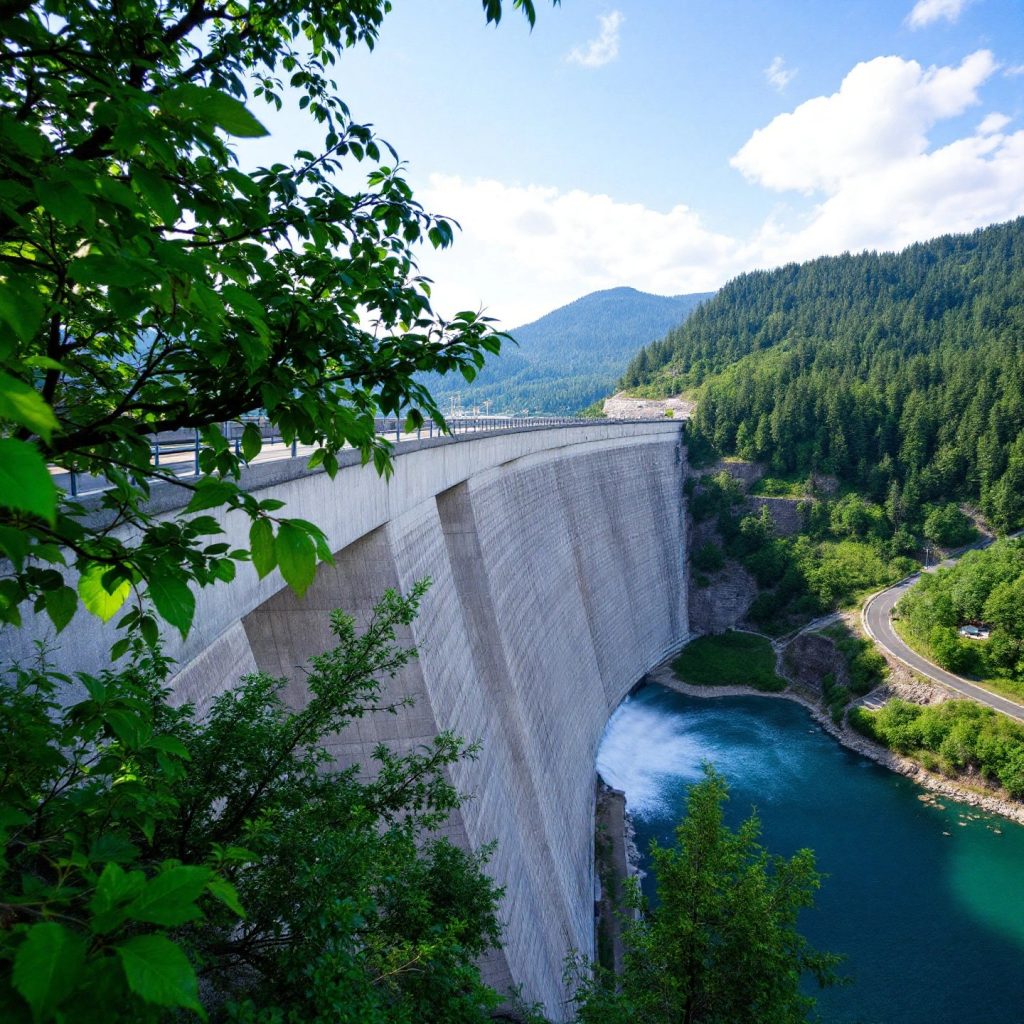Introduction to Hydropower Pros and Cons
Hydropower, a cornerstone of renewable energy, harnesses the natural flow of water to generate electricity. As one of the oldest and most widely utilized forms of renewable energy, it plays a pivotal role in reducing greenhouse gas emissions and promoting sustainable energy solutions globally. However, like any energy source, hydropower comes with its own set of benefits and drawbacks.
Understanding these pros and cons is crucial for making informed decisions about its implementation and integration into energy systems. Hydropower offers several advantages, such as being a renewable and clean energy source that can help meet peak electricity demands and reduce reliance on fossil fuels. On the downside, it can lead to significant ecological disruptions and requires substantial initial investment.
This article will delve into the various facets of hydropower, examining its environmental, economic, and technological impacts. We will explore the mechanics behind hydropower, the role of water resources, and the factors influencing its efficiency. Additionally, we will discuss the ecological changes brought about by hydropower dams, the economic considerations involved, and the practical applications of different hydropower systems. Finally, we’ll consider how to educate younger audiences about this vital energy source and balance the ongoing debates surrounding its use.
By the end of this guide, you’ll have a comprehensive understanding of hydropower’s role in sustainable energy and the critical considerations for its future development. Whether you’re a policymaker, energy professional, or environmentally-conscious individual, this exploration of hydropower will provide valuable insights into its potential and challenges.
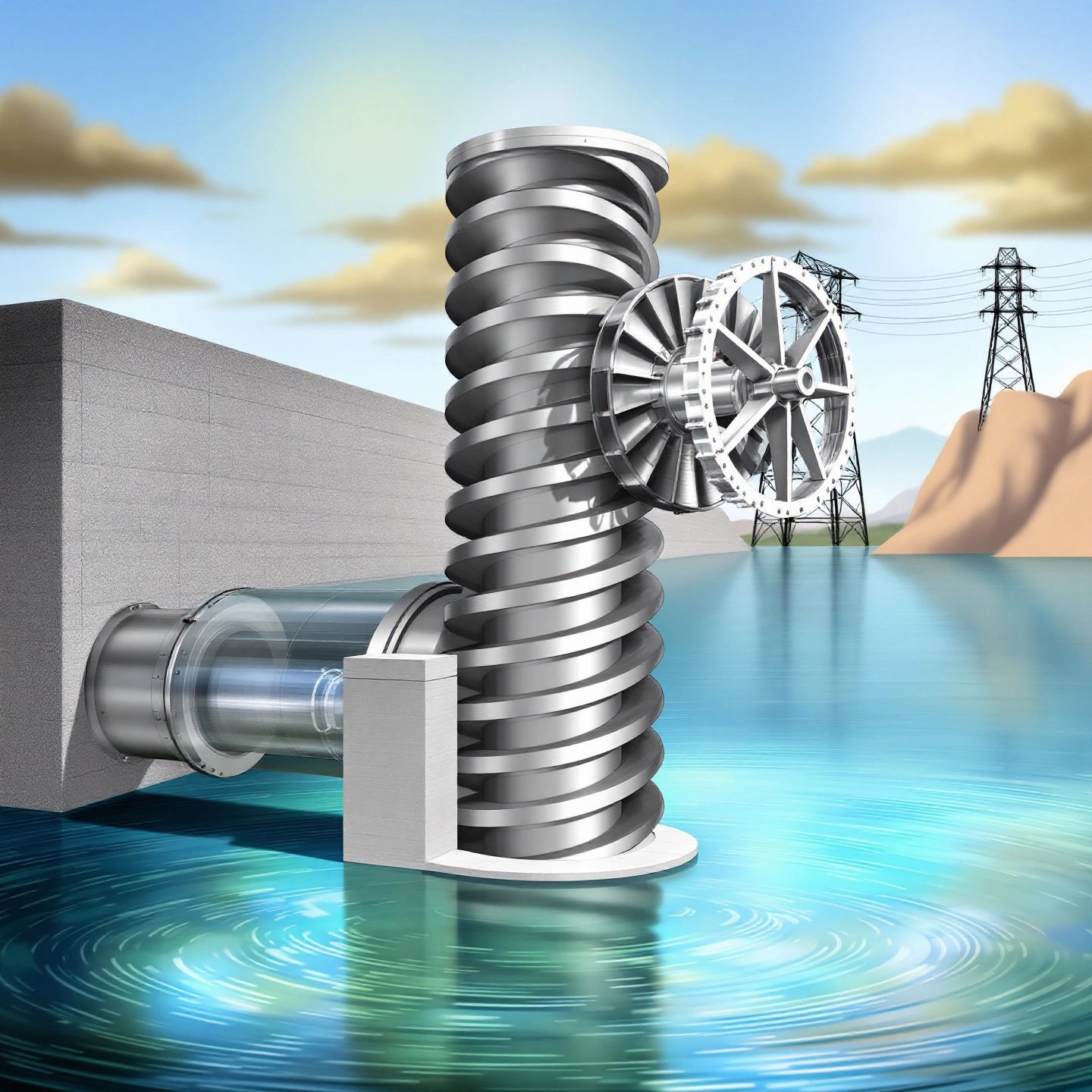
Understanding Hydropower
At its core, hydropower is a renewable energy source that converts the kinetic energy of flowing water into electricity. This process is typically facilitated through the use of dams or diversion structures that manipulate the natural flow of rivers. The fundamental mechanics of hydropower involve water flowing through a penstock—a large pipe—where it spins the blades of a turbine. This turbine, in turn, activates a generator that produces electricity. The efficiency of this process depends on the volume of water flow and the change in elevation from the water source to the turbine, known as the ‘head’ (source) .
Hydropower’s reliance on the water cycle makes it a renewable resource, as it utilizes water that is naturally replenished through precipitation and natural water flows. This characteristic positions hydropower as a crucial player in the transition to sustainable energy systems. However, it’s important to recognize both the benefits and the drawbacks of this energy source.
Pros of Hydropower
- Renewable and Clean: Hydropower generates electricity without emitting greenhouse gases, making it an environmentally friendly option.
- Reliable Energy Supply: Unlike solar or wind energy, hydropower can provide a consistent power supply, as water flow is generally predictable.
- Low Operating Costs: Once a hydropower plant is built, the operational costs are relatively low compared to other forms of energy generation (source) .
Cons of Hydropower
- Ecological Disruption: The construction of dams can significantly alter ecosystems, affecting fish migration patterns and local habitats.
- High Initial Costs: Building hydropower plants requires substantial capital investment, which can be a barrier to development.
- Dependence on Water Availability: Hydropower efficiency can be affected by droughts or changes in seasonal water flow, impacting energy production.
By understanding these basic mechanics and their associated pros and cons, stakeholders can better assess the role of hydropower within broader energy strategies. The next section will explore the various types of water-based hydropower systems and their unique characteristics, further enhancing our understanding of this vital energy source.
Examining Water Hydropower Systems
When considering the diverse landscape of hydropower, it’s essential to understand the various systems that harness the power of water. Each system has distinct characteristics and applications, shaped by the availability of water resources and specific geographic conditions. Two prominent types of water-based hydropower systems are run-of-river hydropower and pumped storage hydropower.
Run-of-River Hydropower
Run-of-river hydropower systems are designed to generate electricity by channeling part of a river’s flow through a canal or penstock. Unlike traditional dams, these facilities typically do not require large reservoirs, making them less intrusive to the natural environment. This setup leverages the river’s natural flow and elevation drop to turn turbines and generate electricity. However, the efficiency of run-of-river systems can be significantly impacted by seasonal water flow variations, making them highly dependent on consistent river conditions.
- Minimal Environmental Impact: These systems often have a smaller ecological footprint compared to large dams.
- Flow Dependency: Electricity production can fluctuate with changes in river flow, which may be affected by seasonal changes and climate factors.
Pumped Storage Hydropower
Pumped storage hydropower acts like a giant battery, storing energy by moving water between two reservoirs at different elevations. During periods of low electricity demand, excess energy is used to pump water to the upper reservoir. When demand peaks, the stored water is released back to the lower reservoir, passing through turbines to generate electricity. This system is highly effective for balancing grid demand and providing backup power.
- Energy Storage Solution: Provides a reliable method for storing and dispatching energy, particularly useful for integrating with intermittent renewable sources like solar and wind.
- High Infrastructure Costs: Requires significant investment in infrastructure and suitable geographic conditions for reservoir construction.
Both run-of-river and pumped storage hydropower systems highlight the importance of local water availability and climate considerations in determining their viability and efficiency. As we continue to explore hydropower’s role in sustainable energy, understanding these systems’ nuances can help guide strategic decisions and optimize their integration into the broader energy grid.
Key Factors Influencing Hydropower Efficiency
Hydropower efficiency is contingent upon a variety of factors that can significantly impact its role as a sustainable energy source. Understanding these hydropower efficiency factors is essential for optimizing its use and ensuring that it remains a net positive contributor to the energy grid. Let’s delve into the primary factors that influence hydropower efficiency and see how they can shift its benefits and drawbacks.
Geographic Location
The geographic location of a hydropower plant is a critical determinant of its efficiency. Regions with abundant water resources and significant elevation changes are ideal for hydropower facilities. For instance, mountainous areas with steep gradients facilitate higher energy production due to greater gravitational water flow. Conversely, areas with flat terrains may not provide enough head— the height difference between the water source and the turbine— to generate substantial energy.
Seasonal Water Flow
Hydropower’s reliance on water flow means that seasonal variations can greatly affect its efficiency. During rainy seasons, increased water flow can enhance electricity generation, while droughts or dry seasons can lead to reduced output. This variability necessitates careful planning and management to maintain consistent energy supply.
Technological Advancements
Technological improvements can significantly bolster hydropower efficiency. Innovations in turbine design, for instance, can increase energy capture from water flow. Additionally, advancements in grid integration technologies can help balance supply and demand more effectively, making hydropower a more reliable energy source.
Government Policies
Government policies play a pivotal role in shaping the efficiency and viability of hydropower projects. Incentives for renewable energy development, regulations on water usage, and environmental protection laws can all influence the success of hydropower facilities. Supportive policies can encourage investment and technological innovation, whereas restrictive regulations might hinder development.
| Factor | Positive Influence | Negative Influence |
|---|---|---|
| Geographic Location | High elevation areas increase energy potential | Flat regions may limit energy production |
| Seasonal Water Flow | Ample rainfall boosts electricity generation | Droughts reduce water availability and output |
| Technological Advancements | Improved turbines enhance efficiency | Lack of innovation can stagnate growth |
| Government Policies | Incentives promote renewable energy projects | Restrictive regulations can impede development |
By examining these factors, stakeholders can better understand the hydropower geographic influence and other determinants that shape the efficiency of hydropower systems. This knowledge is crucial for optimizing hydropower’s role in the global energy landscape and ensuring its sustainable development. As we move forward, the next section will explore the environmental impacts of hydropower dams, offering insights into the ecological considerations that accompany this energy source.
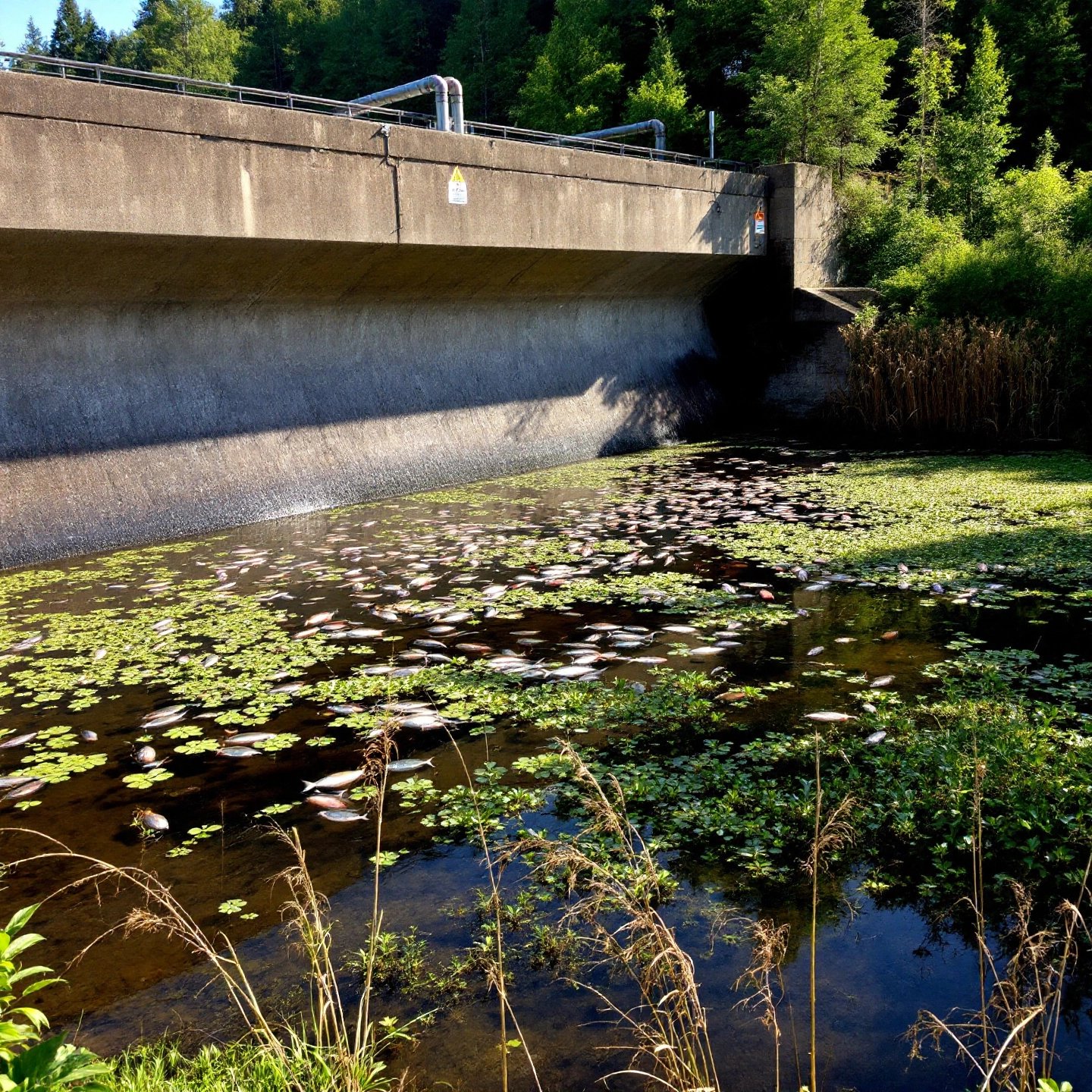
Environmental Impact of Hydropower Dams
Hydropower dams, while providing renewable energy, can lead to significant hydropower environmental impact. These structures alter local ecosystems, affecting both aquatic and terrestrial environments. One of the most notable ecological effects is the disruption of fish migration. Species such as salmon and shad, which migrate upstream to spawn, find their paths blocked by dams. This obstruction can lead to a decline in fish populations, impacting biodiversity and local fishing industries.
Effects on Fish Migration and Local Communities
To mitigate these impacts, solutions like fish ladders and elevators have been implemented to help fish bypass dams. The Bonneville Dam on the Columbia River, for example, features a fish ladder to assist migrating species. However, these measures are not always effective, and fish mortality remains a concern. Additionally, the creation of reservoirs can submerge vast areas of land, leading to the displacement of local communities and loss of agricultural land and cultural sites.
Controversies and Protective Measures
Hydropower projects often spark debates over their ecological and social implications. Critics argue that the environmental costs can outweigh the benefits, especially in regions where large areas of natural habitat are flooded. Protective measures, such as environmental impact assessments and community consultations, are critical in addressing these concerns. These assessments help identify potential ecological effects and guide the development of strategies to minimize harm.
Moreover, the decomposition of organic material in reservoirs can produce greenhouse gases like methane, contributing to global warming. This issue is particularly pronounced in tropical regions where vegetation is abundant.
As we explore sustainable energy solutions, it’s essential to balance hydropower’s benefits with its ecological effects. For those seeking alternative eco-friendly solutions, Renewable Energy Nexus offers insights into solar energy systems that can complement or replace hydropower in certain contexts. Their range of solar panels provides a viable option for reducing carbon footprints and supporting sustainable energy transitions.
In the next section, we will delve into the economic considerations of hydropower, examining the costs and benefits associated with its development and operation.
Economic Considerations of Hydropower
When discussing the economic aspects of hydropower, it’s essential to consider both the upfront capital investments and the long-term financial benefits. Hydropower projects require substantial initial funding for the construction of dams, turbines, and associated infrastructure. However, once operational, these systems benefit from relatively low maintenance costs and no fuel expenses, as water is the primary energy source. This can lead to significant savings over time, making hydropower a cost-effective option in the long run.
Capital Investment and Maintenance Costs
The construction of hydropower facilities involves high capital investment, often running into billions of dollars. This includes the cost of building the dam, turbines, and other necessary infrastructure. Despite these initial costs, the long-term economic benefits can be substantial. According to the U.S. Army Corps of Engineers, hydropower plants contribute to keeping electricity costs affordable by providing low-cost energy to power grids, as they do not rely on fuel that fluctuates in price.
Maintenance costs for hydropower plants are generally lower compared to fossil fuel plants. This is largely due to the absence of fuel costs and the relatively simple mechanical components involved. The longevity of hydropower plants, often exceeding 50 years, further enhances their economic viability.
Job Creation and Community Impact
Hydropower projects can stimulate local economies through job creation during both the construction and operational phases. These projects often require a skilled workforce for construction, operation, and maintenance, leading to employment opportunities in local communities. However, there are potential conflicts over water resources, particularly in regions where water is scarce. These conflicts can arise between hydropower needs and agricultural or domestic water use, necessitating careful management and community engagement.
Long-Term Return on Investment
Hydropower offers a reliable long-term return on investment. The revenue generated from electricity sales can repay the initial investment over time, often within a few decades. The U.S. Army Corps of Engineers notes that revenue from hydropower sales is used to repay the U.S. Treasury, highlighting the financial sustainability of these projects.
While hydropower presents numerous economic advantages, it’s crucial to consider alternative renewable energy solutions that can complement its use. Renewable Energy Nexus offers a range of solar panel products that can serve as either complementary or alternative solutions to hydropower, particularly in regions where water resources are limited or ecological impacts are a concern. By diversifying energy sources, communities can enhance their energy security and sustainability.
As we transition to a more sustainable energy future, understanding the economic implications of hydropower is vital. The next section will explore the practical applications of hydropower, from large-scale plants to micro-hydropower systems, providing insights into their real-world uses and benefits.
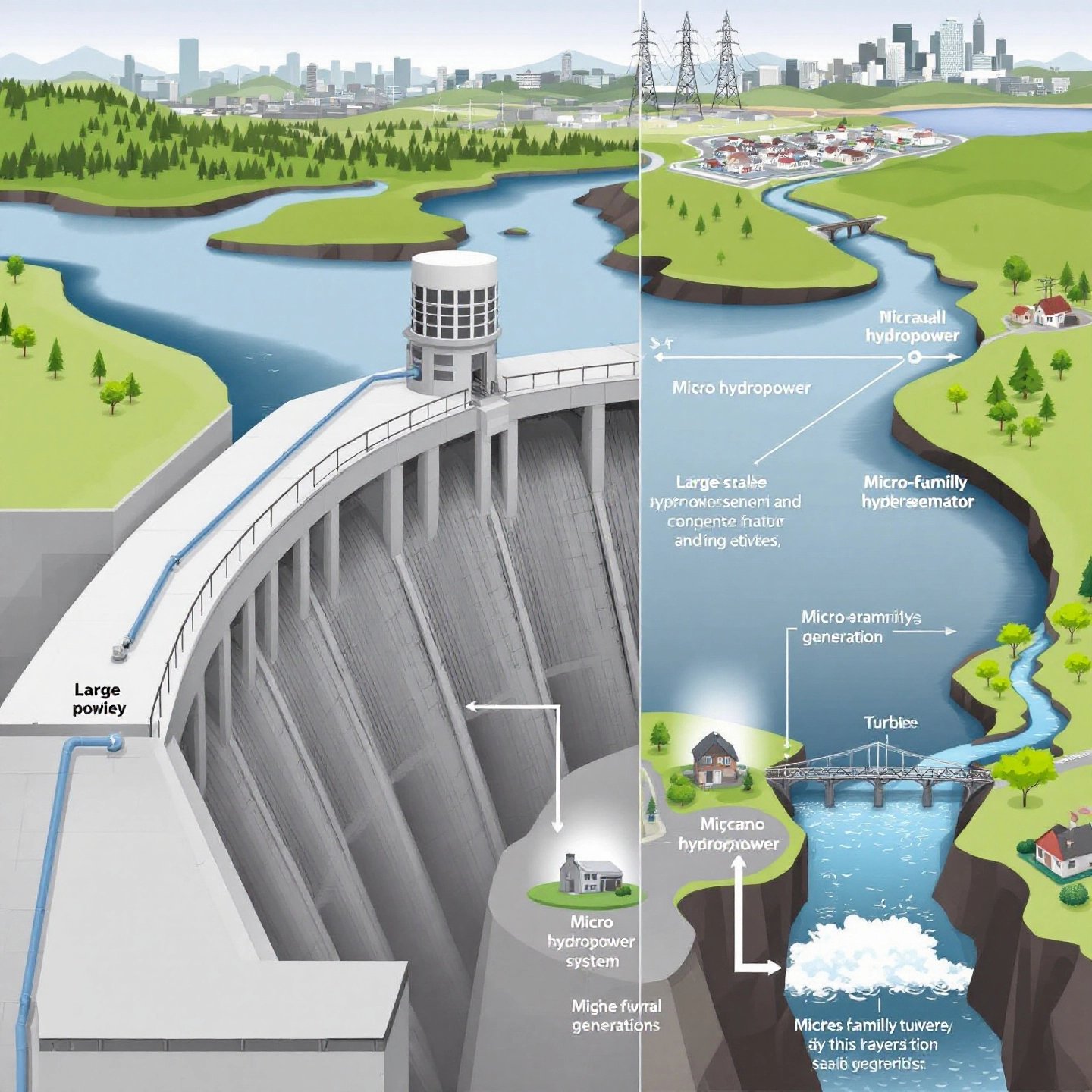
Practical Applications of Hydropower
Hydropower’s versatility allows it to be implemented in various scales, from massive installations to small-scale systems. This adaptability makes it a valuable energy source for diverse applications, ranging from powering entire cities to supporting individual households.
Large-Scale Hydropower
Large-scale hydropower plants, often associated with vast dams, are designed to generate electricity for extensive areas, supporting both urban and industrial needs. These facilities can produce tremendous amounts of energy, providing a stable power supply that is less susceptible to fluctuations compared to other renewable sources like wind or solar. Large-scale plants are instrumental in urban planning, ensuring reliable electricity supply for growing cities and industrial hubs. However, their construction requires significant land and water resources, which can lead to environmental and social challenges.
- Rural Electrification: Large hydropower projects can be pivotal in bringing electricity to remote areas, fostering economic development and improving living standards.
- Industrial Consumption: Industries benefit from the consistent and robust power supply provided by large-scale hydropower, supporting manufacturing and other energy-intensive operations.
Micro-Hydropower Systems
Micro-hydropower systems, on the other hand, are designed for smaller applications, typically generating up to 100 kilowatts of electricity. These systems are ideal for rural and isolated communities where grid access is limited. Micro-hydropower can power small farms, homes, or local businesses, offering a sustainable energy solution without the need for extensive infrastructure.
- Localized Energy Production: Micro-hydropower systems enable communities to harness local water resources, reducing dependence on external power sources.
- Environmental Compatibility: These systems often have minimal environmental impact, as they require smaller installations and work with natural water flows.
When considering the feasibility of hydropower projects, whether large or small, several practical steps should be taken:
- Land Surveys: Conduct thorough site assessments to understand the terrain and water flow dynamics, which are crucial for determining the suitability of the project.
- Energy Audits: Evaluate the energy needs of the target area to ensure that the hydropower system can meet demand efficiently.
- Community Engagement: Involve local communities in the planning process to address potential concerns and ensure the project’s social acceptance.
By understanding the distinct roles of large-scale and micro-hydropower systems, stakeholders can better plan and implement hydropower solutions that align with specific energy needs and environmental considerations. This approach not only optimizes energy production but also supports sustainable development goals. As we move forward, the next section will simplify the concept of hydropower for younger audiences, making this vital energy source accessible to all ages.

Educating Kids About Hydropower
Have you ever wondered how water can help turn on the lights in your home? It’s all about hydropower! Hydropower is a way to make electricity by using the energy from moving water, like rivers or waterfalls. Let’s dive into what makes hydropower so special and why it’s important to know both the good and the not-so-good things about it.
Why is Hydropower Awesome?
- Clean Energy: Hydropower is a type of clean energy, which means it doesn’t pollute the air like burning coal or gas does.
- Renewable Resource: Water keeps flowing, so we can use it again and again to make electricity.
- Reliable Power: As long as rivers keep flowing, hydropower can provide a steady supply of electricity.
What Are the Challenges?
- Impact on Fish: Dams used in hydropower can block fish from swimming to places where they lay eggs, which can be a big problem for fish populations.
- Nature Changes: Building dams can change the way rivers flow, which might affect the plants and animals living there.
Now that we’ve explored some pros and cons, how can we make learning about hydropower fun and easy for kids?
Tips for Teaching Hydropower
- Use Models: Build simple models with kids to show how water can turn a wheel or turbine to generate electricity.
- Visit a Dam: If possible, visit a local dam or hydropower plant to see the process in action.
- Interactive Games: Use online games or apps that simulate how hydropower works to engage kids in a fun way.
By understanding how hydropower works and its effects on the environment, kids can learn to appreciate this powerful energy source and think about how we can use it responsibly. As we continue our journey into sustainable energy solutions, let’s explore how hydropower fits into the bigger picture of balancing energy needs with caring for our planet.
Balancing the Pros and Cons of Hydropower
Hydropower stands at the intersection of sustainability and environmental impact, economic growth, and community well-being. While it is celebrated for its role in reducing carbon emissions and fostering renewable energy production, the discussion surrounding its implementation is complex and multifaceted.
Sustainability Versus Environmental Impact
Hydropower’s sustainability is often highlighted by its ability to provide a continuous and renewable energy source. It reduces reliance on fossil fuels and helps in the fight against climate change. However, the environmental impact of hydropower cannot be overlooked. The construction of dams often leads to significant ecological changes, such as habitat destruction and altered water flow, which can disrupt local ecosystems. Reservoirs created by dams can also contribute to greenhouse gas emissions due to the decomposition of organic material.
- Pros: Renewable energy source, reduces carbon footprint, and supports energy security.
- Cons: Ecological disruption, potential greenhouse gas emissions, and loss of biodiversity.
Economic Growth Versus Community Well-being
The economic benefits of hydropower are substantial, providing low-cost electricity and creating jobs during construction and operation. However, these benefits can come at the expense of local communities, particularly those that rely on the affected water resources for their livelihoods. Displacement and inadequate compensation for affected communities are significant concerns, often leading to social unrest and conflict.
- Pros: Job creation, economic development, and long-term energy cost savings.
- Cons: Displacement of communities, potential for social conflict, and inequitable resource distribution.
Balancing these pros and cons requires careful planning and stakeholder engagement. Ensuring that hydropower projects are developed sustainably involves integrating environmental assessments, consulting with local communities, and implementing technologies that minimize ecological and social impacts. By doing so, hydropower can continue to be a vital part of the global energy mix, contributing to sustainable development while respecting the needs and rights of the communities it affects.
Conclusion: The Future of Hydropower
As we reflect on the multifaceted role of hydropower in the global energy landscape, it’s clear that this renewable energy source holds significant promise for a sustainable future. However, its deployment is not without challenges. The future of hydropower hinges on balancing its substantial energy potential with the need to mitigate ecological disruptions and address socio-economic concerns.
Hydropower’s contribution to reducing carbon emissions and supporting energy security is undeniable, yet it demands careful planning to minimize its environmental footprint. As we advance, technological innovations and improved management strategies are crucial for enhancing hydropower’s efficiency while protecting ecosystems. Moreover, government policies and community involvement play pivotal roles in ensuring that hydropower projects are developed sustainably and equitably.
Looking ahead, hydropower must be integrated into a broader array of sustainable energy solutions. By complementing hydropower with other renewable sources like solar and wind, we can create a diversified and resilient energy system. This approach not only enhances energy security but also supports the transition to a low-carbon economy.
For those interested in exploring sustainable energy options further, Renewable Energy Nexus offers valuable insights and resources. Their range of solar panels provides an effective alternative or complement to hydropower, particularly in areas where water resources are limited or ecological impacts are a concern.
In conclusion, while hydropower remains a cornerstone of renewable energy, its future success relies on innovation, strategic planning, and a commitment to sustainability. By embracing a holistic approach to energy development, we can harness the full potential of hydropower and other renewable resources to create a cleaner, more sustainable future for all.
Frequently Asked Questions About Hydropower
1. What are the main advantages of hydropower?
Hydropower is a renewable and clean energy source that reduces greenhouse gas emissions, provides reliable energy supply, and has low operating costs.
2. What are the disadvantages of hydroelectric energy?
Hydroelectric energy can cause ecological disruptions, has high initial costs, and depends heavily on water availability, which can be affected by droughts.
3. How do hydropower plants impact local ecosystems?
Hydropower plants can disrupt fish migration and alter habitats, potentially leading to biodiversity loss and impacting local fishing industries.
4. What economic benefits does hydropower offer?
Hydropower offers low long-term electricity costs, job creation during construction and operation, and a reliable return on investment through electricity sales.
5. How can hydropower be integrated with other renewable energy sources?
Hydropower can complement solar and wind energy, providing a stable power supply and energy storage solutions, enhancing overall grid reliability.

